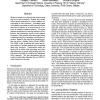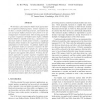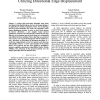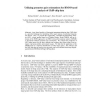90 search results - page 7 / 18 » Utile distinction hidden Markov models |
IJCAI
2003
13 years 11 months ago
2003
Whenever people move through their environments they do not move randomly. Instead, they usually follow specific trajectories or motion patterns corresponding to their intentions....
CVPR
2006
IEEE
14 years 12 months ago
2006
IEEE
We introduce a discriminative hidden-state approach for the recognition of human gestures. Gesture sequences often have a complex underlying structure, and models that can incorpo...
CEE
2010
13 years 10 months ago
2010
A motion field generation algorithm using block matching of edge-flag histograms has been developed aiming at its application to motion recognition systems. Use of edge flags inste...
GCB
2008
Springer
13 years 11 months ago
2008
Springer
: Array-based analysis of chromatin immunoprecipitation data (ChIP-chip) is a powerful technique for identifying DNA target regions of individual transcription factors. Here, we pr...
ICPR
2008
IEEE
14 years 4 months ago
2008
IEEE
We study models that characterize pen trajectories of online handwritten characters in a fine manner. We propose radical based fine trajectory hidden Markov models (HMMs), which...




